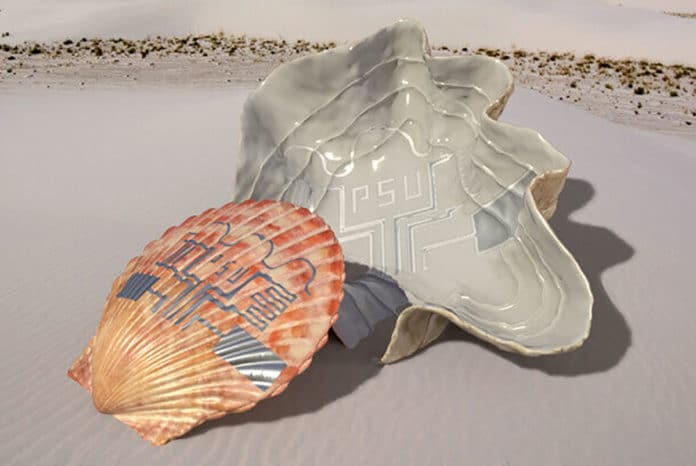Printable electronics could cause a proliferation of smart, connected devices, from household appliances to medical diagnostic sensors. But the variety of printing surfaces poses a challenge since they cannot be used on complicated textures and shapes such as human skin.
Now, an international team of researchers, led by Penn State, has developed a low-cost, low-heat transfer technique that can print biodegradable electronics on a variety of complex geometries and, potentially, human skin.
“We are trying to enable direct fabrication of circuits on freeform, 3-D geometries,” said Huanyu “Larry” Cheng, Dorothy Quiggle Career Development Professor in Penn State’s Department of Engineering Science and Mechanics (ESM). “Printing on complicated objects can allow a future Internet of Things where circuits can connect various objects around us, whether they be smart home sensors, robots performing complex tasks together, or devices placed on the human body.“
For their printing process, the researchers started with covering a thin film, which was attached to a stencil-like overlay on the target surface, with an ink made from zinc nanoparticles. They then pulsed a high-energy xenon light through the film. Within milliseconds, energy from this light excited the particles enough to transfer them to the new surface through the stencil. Printed objects in the experiment were complex in shape that included a glass beaker and a seashell. The transferred zinc formed a conductive electronic circuit that could be adapted for use as a sensor or antenna.
“Our electronics upgrade every two years or so, and this creates a huge amount of electronic waste,” Cheng said. “When we look at the future, if our electronics are green enough to be flushed down the toilet, their use will be much better for the environment.“
The new method does not use expensive equipment like vacuum chambers, making it much faster and cost-efficient than other electronics printing techniques. The biodegradability factor also improves the security of any device it’s used on.
“If your device is only encrypted with software, it can always be cracked, and there’s a potential leak for information,” said Cheng. “This biodegradable device can be physically destroyed so that data can’t be recovered; it presents a unique opportunity that can’t be addressed by traditional silicon devices.”
The team has also conceived a way to make the biodegradable circuits permanent by submerging the printed surfaces into solutions containing copper or silver. In the future, they plan to investigate ways to make the printing process more friendly to large-scale manufacturing.
